Results 1 to 10 of 17
Hybrid View
-
12-23-2018, 06:25 PM #1

The whole 'who made that' question is one I've chased a lot, myself. I did a big writeup on it here.
The short version is that the tang stamp only tells you who put in the work order, not where it was made. Those Rodgers razors could've been made at Marshes & Shepherd's workshops, or the Butcher brothers, or the Raggs. There isn't really any way of knowing who actually made them unless they're from a tiny number of very small, historically identifiable manufacturers.
While I've definitely come across one or two that were honed that way, it was not the accepted norm.
Here's Ebenezer Rhodes, Sheffield manufacturer & Master Cutler on the subject in 1822:
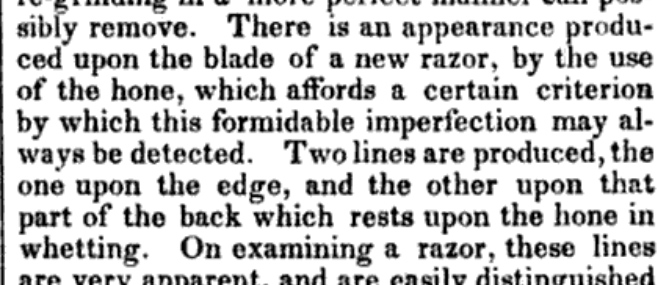
And here's Benjamin Kingsbury, an influential London -- the edition was most recently updated around the same time as Rhodes, but it was first published in the late 1700's.
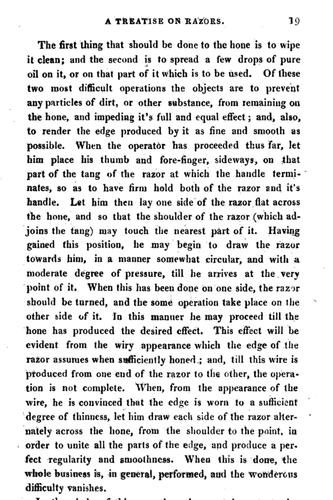
It's called pique work, because very early on English manufacturers realized they could charge more for French words.
They did it exactly that way. I've seen maybe as many as 4 different gauges of wire used. Ideally, each pin would be very delicately hammered to make it more snugly fit, then ground flat. It worked best on ivory or bone, but I've also seen it in tortoise and very occasionally horn.
I can only guess at how accurate this wikipedia page is, but I don't have any real reason to doubt the dates it gives. Razor scales as ornate as what's shown there are very rare.-Zak Jarvis. Writer. Artist. Bon vivant.
-
-
12-23-2018, 07:28 PM #2
-
The Following User Says Thank You to Hanlon For This Useful Post:
Voidmonster (12-23-2018)
-
12-24-2018, 03:53 AM #3

Holy s#!+ those are museum pieces!
Both of you guys have some serious works of art.
As far as the number of pins.. Wow! Even with some kind of stencil or jig pattern ... Had to be crazy time consuming.
Now my questions are:
-Are there any records of the methods used for this art form?
-Can we do the same?
Those pins, errr uh wire?, very thin.. Drill hole first and then insert? Hammer it in? Driven in with speed?
I assume a tiny drill, but then I second guess that thought.
There's a kind of unique style to it, very cool!
Thanks for the pics! Very much appreciated.“You must unlearn what you have learned.”
– Yoda
-
12-24-2018, 05:00 AM #4

All I can say with regards to method is: it would take someone with a lot better eyesight and fingers a lot more nimble than mine. (And probably with more patience too).
-
12-24-2018, 06:40 AM #5

Technically, I believe even the 1/16th rod we use for pinning razors counts as wire, but the stuff used in pique work is a good deal smaller. I'm planning on doing a set of scales using the technique in the near future and I'll fully document it for the forum.
ScienceGuy has done a set in black horn.
When I do it, I'll be using a slab of tortoiseshell and two gauges of silver & gold wire. I'll lock my drill press down so it only penetrates about 0.5mm into the material and I'll use masking tape with a template on it. Once all the holes are drilled, the idea is to insert wire, snip with flush-cutters, then do the next one until they're all filled in. Then I'll use a watchmakers hammer with a polished peening head to get them all snug (gently), then a file to get them flat, then micromesh to get everything polished.
There are almost certainly records of how it was done. It's possible glue was used in the holes originally, something like cascamite, but it all seems relatively straight forward to me -- just very fidgety.-Zak Jarvis. Writer. Artist. Bon vivant.
-
The Following User Says Thank You to Voidmonster For This Useful Post:
MikeT (12-24-2018)
-
12-24-2018, 07:03 AM #6

I have some blades with pique work. One I just happen to photograph the other day.
The blade has a slight frown.
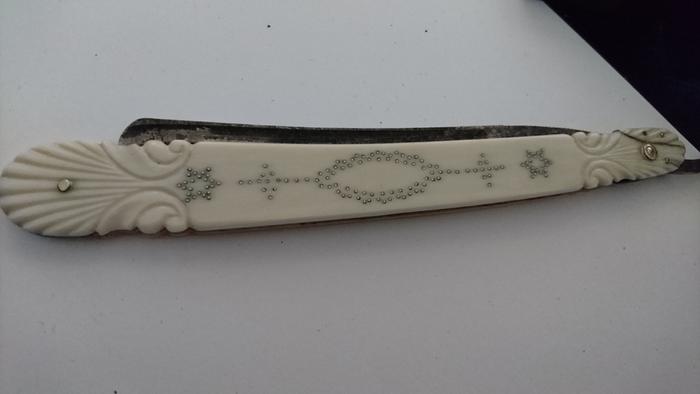
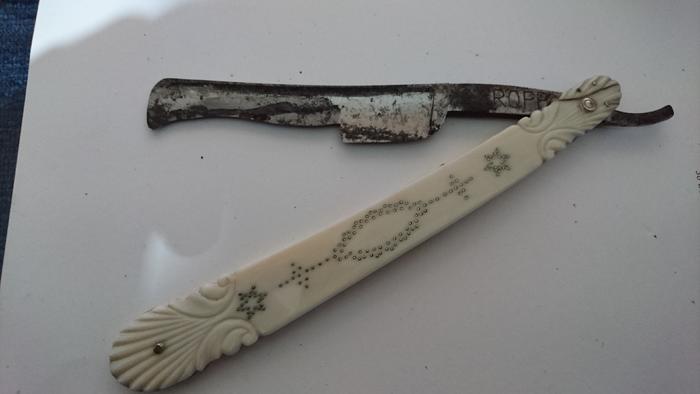
-
The Following 3 Users Say Thank You to JOB15 For This Useful Post:
MikeT (12-24-2018), outback (12-24-2018), Voidmonster (12-24-2018)
-
12-24-2018, 01:39 PM #7

Thanks Zak! I'll be doing it some day, though there are some epic projects that are ahead on the list.
For now my right hand is as steady as a surgeon's. Hopefully it stays that way.
That description is about what comes up when I imagine the method would be.
Probably use various thicknesses of wire. Seems glue is a good idea, but maybe no need, I'd just hate for those pins to ever come out.“You must unlearn what you have learned.”
– Yoda
-
12-24-2018, 05:56 PM #8


 91Likes
91Likes LinkBack URL
LinkBack URL About LinkBacks
About LinkBacks

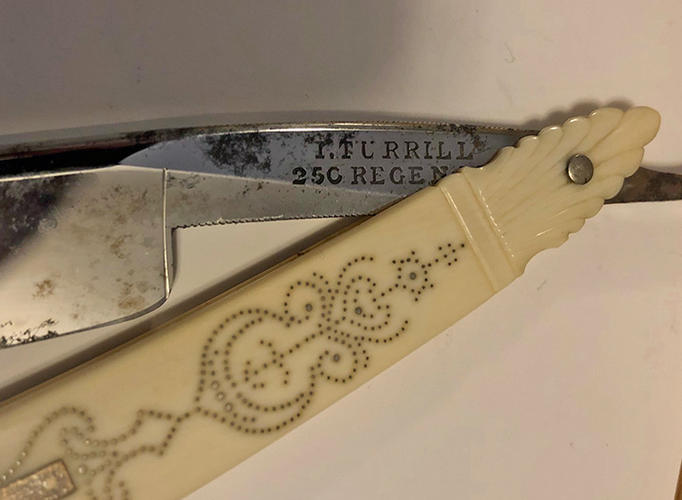








 Reply With Quote
Reply With Quote